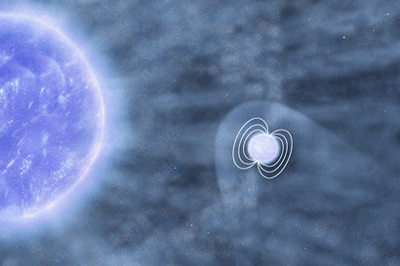
During a routine twelve and a half hour observation of star system IGR J18410-0535, the XMM-Newton caught an event that would make Emily Post proud… a not-so-discreet burp from a neutron star. Continue reading “Neutron Star Burps Up Stellar Gas”

During a routine twelve and a half hour observation of star system IGR J18410-0535, the XMM-Newton caught an event that would make Emily Post proud… a not-so-discreet burp from a neutron star. Continue reading “Neutron Star Burps Up Stellar Gas”
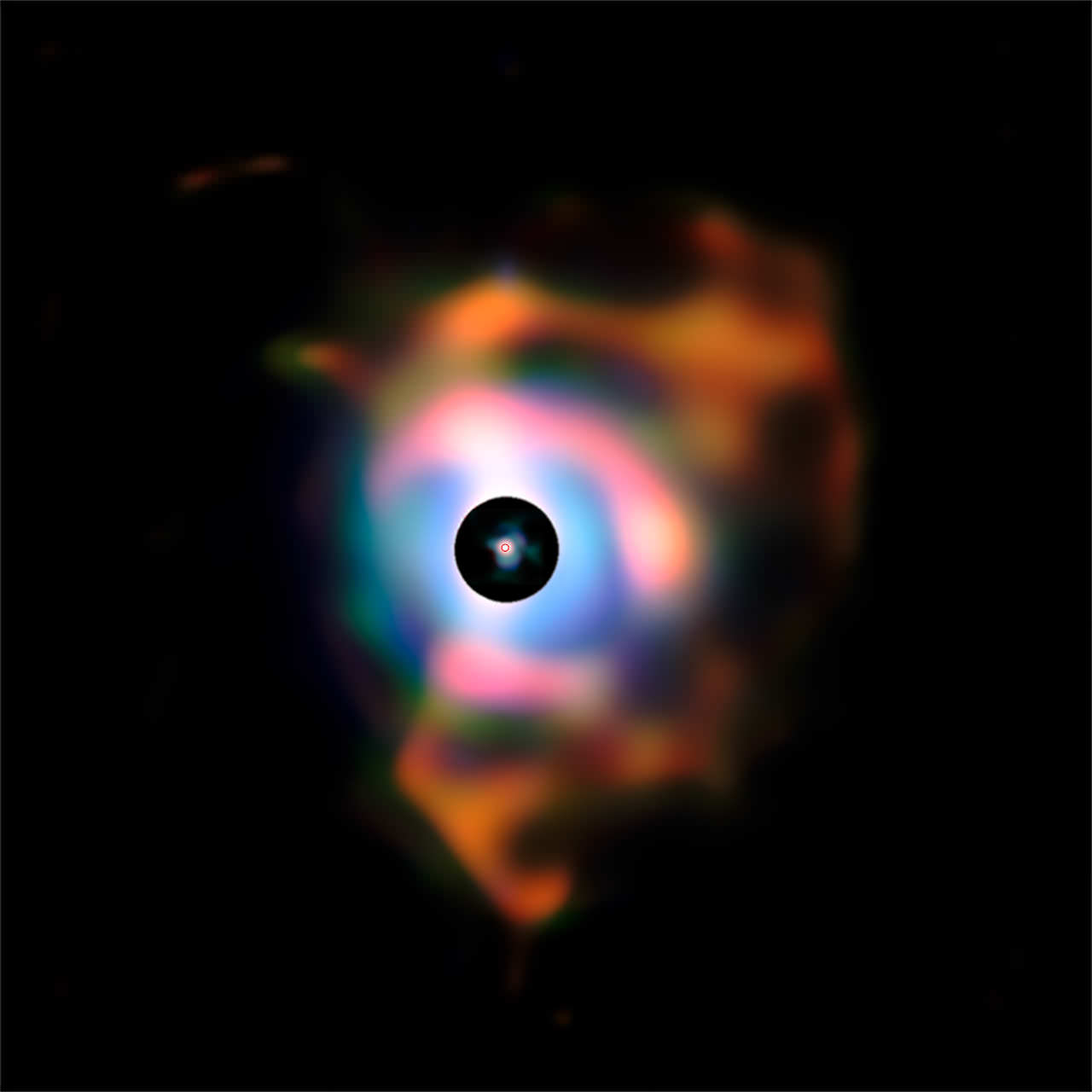
[/caption]
If it were at home in the center of our solar system, this red supergiant’s girth would extend out almost to the orbit of Jupiter. It’s about a thousand times larger than Sol and shines a hundred thousand times brighter. What’s more, the amount of mass it sheds every ten thousand years could create another sun. It’s nearing the end of its life and when it goes supernova, we’ll be able to see it here on Earth – even in broad daylight. So what’s surrounding Betelgeuse that looks like the conflagration generation? Read on…
Using the VISIR instrument on ESO’s Very Large Telescope (VLT), researchers have been able to take a more detailed look than ever at the nebula surrounding Betelgeuse. These infrared diffraction-limited images hold clues to the stellar aging process, since much of this structure cannot be seen in visible light. Filled with knots and pockets, this mysterious ether makes for prime study.
“Mass-loss occurring in red supergiants (RSGs) is a major contributor to the enrichment of the interstellar medium in dust and molecules. The physical mechanism of this mass loss is however relatively poorly known. Betelgeuse is the nearest RSG, and as such a prime object for high angular resolution observations of its surface (by interferometry) and close circumstellar environment.” says P. Kervella, et al. “The goal of our program is to understand how the material expelled from Betelgeuse is transported from its surface to the interstellar medium, and how it evolves chemically in this process.”
With branches extending up to six times the diameter of the star, Betelguese isn’t showing any uniformity in its surface shedding process. Picture, if you will, heating a pot of spaghetti sauce on a hot stove. When the temperature fires up below, it creates a rising bubble. When this surfaces, it pops – blowing spaghetti sauce all over the top of your stove and walls – and releasing steam. While this is a loose analogy, it’s fairly representative of what’s going on with this red supergiant. Large-scale gas motions inside the star are popping out O-rich dust, such as silicates or alumina and expelling gases in jets.
“The circumstellar envelope around Betelgeuse extends at least up to several tens of stellar radii. Its relatively high degree of clumpiness indicates an inhomogeneous spatial distribution of the material lost by the star.” says P. Kervella, et al. “Its extension corresponds to an important intermediate scale, where most of the dust is probably formed, between the hot and compact gaseous envelope observed previously in the near infrared and the interstellar medium.”
For now, there’s still many questions to be answered, such as how the dust is created and how it can be found as such great distances from the star itself. We’re just now beginning to understand RSG convection properties and their mechanisms for mass loss. For now, the team will continue their studies using these new techniques. “The knots and filamentary extensions of the nebula observed at larger distances from Betelgeuse appear to correspond to inhomogeneities in the mass lost by the star in the recent past, probably within the last few centuries. Further observations are expected to clarify the nature and composition of the nebular features identified in our images, using spatially resolved spectroscopy of the CSE.”
And the marshmallow for this campfire might just be a companion star…
Original Story Source: ESO Press Release.
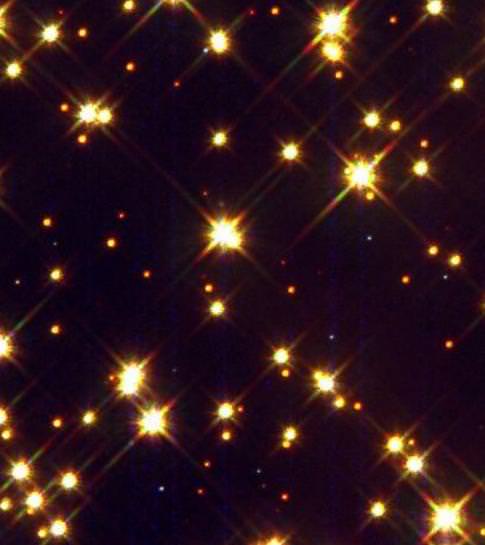
[/caption]
With no more volume than could be contained within a teaspoon, the material that makes up a white dwarf star weighs tons. Smaller than the diameter of Earth, and a direct family member of stars like our own Sol, these stellar gnomes could predict our eventual fate.
Using data from the Hubble Space Telescope, Nathan Dickinson, a postgraduate student in the University’s Department of Physics and Astronomy, is hard at work analyzing chemical compositions of white dwarf stars for his PhD. Unlike many students interested in “heavy metal”, Dickinson is more interested in “heavy elements”. The older, more cool models could contain elements such as oxygen, nitrogen, silicon… while the hot youngsters show heavy elements like calcium and magnesium. These weighty basics occur at extreme heat and sometimes, even to excess. The cremation generation?
“Understanding whether the extra material in hot white dwarfs comes from torn up planets is important,” emphasizes Dickinson. “It can give us an idea of how these ancient planetary systems evolve as the star ages, so we get a fuller picture of how solar systems die. However, they sometimes exhibit more of this material than is expected, which raises the question of whether this extra material also came from planets or whether it originated elsewhere, perhaps in clouds around the star.”
Past research has shown that anywhere from 1 to 3% of white dwarf stars can be contaminated by an influx of materials from closely orbiting dust clouds. What makes up these clouds? It could be rocky debris like asteroids. Held within the Roche Limit, these planetoids are mulched by gravitational tides – just like Saturn’s ring system.
“Working at the forefront of this scientific area is extremely exciting,” says Dickinson. “I find being one of a relatively small community of people in the world to work on this particular area amazing. This work is helping to shape our understanding of how most stars end their lives, how solar systems die, how the environment around these ancient stars behaves and what will ultimately happen to the vast majority of stars in the galaxy.”
And really close to home…
Original Story Source: Science Daily.
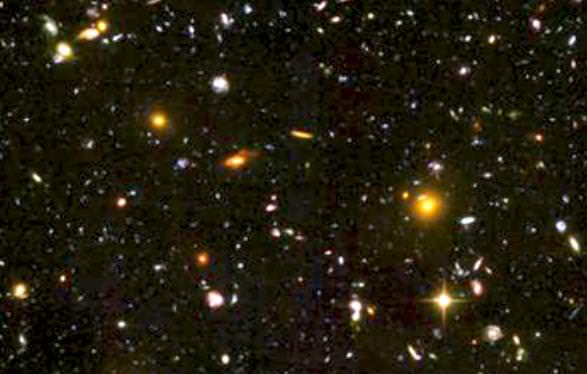
[/caption]
It’s a well known fact that galaxies come in two types – either actively forming stars or not. In simplistic terms, that means they are either awake or asleep. But now scientists are looking back twelve billion light years across time to find the same holds just as true then as it does now. As a matter of fact, galaxies may have been behaving this way for around 85% of the history of the Universe.
“The fact that we see such young galaxies in the distant universe that have already shut off is remarkable,” said Kate Whitaker, a Yale University graduate student and lead author of the paper, which is published in the June 20 online edition of the Astrophysical Journal.
So, without poking the sleeping dragon, just how did the astronomers make their determinations? Try with the use of a 4-meter Kitt Peak telescope in Arizona and a special set of filters developed by Whitaker and her team. Just like all astronomy filters, this new breed is selective to certain bandpasses, or wavelengths, of light. These new filter sets were then used on 40,000 galaxies over a 75 night period and the data collected and examined. The end product was the deepest and most comprehensive of its kind so far. Active, awake galaxies appear more blue, while the sleepy-heads appear red. Believe it or not, when it comes to the cosmic bedroom there’s more activity than previously thought.
“We don’t see many galaxies in the in-between state,” said Pieter van Dokkum, a Yale astronomer and another author of the paper. “This discovery shows how quickly galaxies go from one state to the other, from actively forming stars to shutting off.”
Whether the dozing galaxies have completely shut down remains an open question, Whitaker said. However, the new study suggests the active galaxies are forming stars at rates about 50 times greater than their somnambulistic counterparts. “Next, we hope to determine whether galaxies go back and forth between waking and sleeping or whether they fall asleep and never wake up again,” van Dokkum said. “We’re also interested in how long it takes galaxies to fall asleep, and whether we can catch one in the act of dozing off.”
Pass the Red Bull… and sing the blues! “Are you sleeping? Can you hear me? Do you know if I am by your side? Does it matter? If you hear me? When the mornin’ comes I’ll be there by your side… There was a time, we had a time. There was a time we had time…”
Original Story Source: Yale Daily Bulletin.
[/caption]
One of the long standing challenges in stellar astronomy, is explaining why stars rotate so slowly. Given their large masses, as they collapsed to form, they should spin up to the point of flying apart, preventing them from ever reaching the point that they could ignite fusion. To explain this rotational braking, astronomers have invoked an interaction between the forming star’s magnetic field, and forming accretion disc. This interaction would slow the star allowing for further collapse to take place. This explanation is now over 40 years old, but how has it held up as it has aged?
One of the greatest challenges to testing this theory is for it to make predictions that are directly testable. Until very recently, astronomers were unable to directly observe circumstellar discs around newly formed stars. In order to get around this, astronomers have used statistical surveys, looking for the presence of these discs indirectly. Since dust discs will be warmed by the forming star, systems with these discs will have extra emission in the infrared portion of the spectra. According to the magnetic braking theory, young stars with discs should rotate more slowly than those without. This prediction was confirmed in 1993 by a team of astronomers led by Suzan Edwards at the University of Massachusetts, Amherst. Numerous other studies confirmed these general findings but added a further layer to the picture; stars are slowed by their discs to a period of ~8 days, but as the discs dissipate, the stars continue to collapse, spinning up to a period of 1-2 days.
Another interesting finding from these studies is that the effects seem to be most pronounced for stars of higher mass. When similar studies were conducted on young stars in the Orion and Eagle nebulae, researchers found that there was no sharp distinction between stars with or without disks for low mass stars. Findings such as these have caused astronomers to begin questioning how universal the magnetic disc braking is.
One of the other pieces of information with which astronomers could work was the realization around 1970 that there was a sharp divide in rotational speeds between high mass stars and lower mass ones at around the F spectral class. This phenomenon had been anticipated nearly a decade earlier when Evry Schatzman proposed that the stellar wind would interact with the star’s own magnetic field to create drag. Since these later spectral class stars tended to have more active magnetic fields, the braking effect would be more important for these stars.
Thus astronomers now had two effects which could serve to slow rotation rates of stars. Given the firm theoretical and observational evidence for each, they were both likely “right”, so the question became which was dominant in which circumstance. This question is one with which astronomers are still struggling.
To help answer the question, astronomers will need to gather a better understanding of how much each effect is at work in individual stars instead of simply large population surveys, but doing so is tricky. The main method employed to examine disc locking is to examine whether the inner edge of the disc is similar to the radius at which an object in a Keplarian orbit would have a similar angular velocity to the star. If so, it would imply that the star is fully locked with the disc’s inner edge. However, measuring these two values is easier said than done. To compare the values, astronomers must construct thousands of potential star/disc models against which to compare the observations.
In one recent paper astronomers used this technique on IC 348, a young open cluster. Their analysis showed that ~70% of stars were magnetically locked with the disc. However, the remaining 30% were suspected to have inner disc radii beyond the reach of the magnetic field and thus, unavailable for disc braking. However, these results are somewhat ambiguous. While the strong number of stars tied to their discs does support the disc braking as an important component of the rotational evolution of the stars, it does not distinguish whether it is presently a dominant feature. As previously stated, many of the stars could be in the process of evaporating the discs, allowing the star to again spin-up. It is also not clear if the 30% of stars without evidence of disc locking were locked in the past.
Research like this is only one piece to a larger puzzle. Although the details of it aren’t fully fleshed out, it is readily apparent that these magnetic braking effects, both with discs and stellar winds, play a significant effect on slowing the angular speed of stars. This runs completely contrary to the frequent Creationist claim that “[t]here is no know [sic] mechanical process which could accomplinsh [sic] this transfer of momentum”.
[/caption]
Residing in space 6500 light-years away in the constellation of Cepheus, an aged star designated as IRAS 22036+5306 is making its final curtain call. Its stellar play is ending and its making the transition through the protoplanetary, or preplanetary, nebula phase. This isn’t an unusual occurrence, but considering we’ve only been able to witness perhaps a few hundred such events out of the millions of stars we’ve observed – it is a rare visual example. Behold a red giant turning into a white dwarf…
Kudos go to the watchful eye of the Hubble Space Telescope for capturing this ancient celestial oddity. Inside the elaborate enclosure of expelled material is an exposed stellar core – burning hotter than the aspirations of a young actor. Encircling it is a diaphanous cloak of composites – everything from comets to small, rocky bodies. Gases and clumps of material ten thousand times the mass of Earth rocket outward from the poles at speeds of up to 800 000 kilometres per hour. It is the last hurrah.
When its time has passed, IRAS 22036+5306 will transform into a planetary nebula. Intense ultraviolet radiation will ionise the cast-off gases and it will kindle the colorful spectacle which signals the low, slow cool-down until its next evolution. “Studying rarities such as IRAS 22036+5306 provides astronomers with a window into the short and poorly understood phase of stellar evolution when bloated red giant stars pare down to small white dwarfs.” says the ESA/Hubble/NASA team. “For example, mysteries remain about how exactly the dusty torus and jets form.”
Transforming into a planetary nebula may be what awaits the star of our own solar system play – as it is thought to be the eventual destiny of most medium-sized stars. But, our stellar actor might not exit with such splendor since IRAS 22036+5306 is roughly four times the size of the Sun.
And it’s a round of applause we’ll be waiting on for another 5 billion years…

[/caption]
Located in the constellation of Perseus and just a mere 750 light years from Earth, a young protostar is very busy spewing forth copious amounts of water. Embedded in a cloud of gas and dust, the hundred thousand year old infant is blasting out this elemental life ingredient from both poles like an open hydrant – and its fast moving droplets may be seeding our Universe…
“If we picture these jets as giant hoses and the water droplets as bullets, the amount shooting out equals a hundred million times the water flowing through the Amazon River every second,” said Lars Kristensen, a postdoctoral astronomer at Leiden University in the Netherlands and lead author of the new study detailing the discovery, which has been accepted for publication in the journal Astronomy & Astrophysics.. “We are talking about velocities reaching 200,000 kilometers [124,000 miles] per hour, which is about 80 times faster than bullets flying out of a machine gun.”
To capture the the quicksilver signature of hydrogen and oxygen atoms, the researchers employed the infrared instruments on-board the European Space Agency’s Herschel Space Observatory. Once the atoms were located, they were followed back to the star where they were formed at just a few thousand degrees Celsius. But like hitting hot black top, once the droplets encounter the outpouring of 180,000-degree-Fahrenheit (100,000-degree-Celsius) gas jets, they turn into a gaseous format. “Once the hot gases hit the much cooler surrounding material – at about 5,000 times the distance from the sun to Earth – they decelerate, creating a shock front where the gases cool down rapidly, condense, and reform as water.” Kristensen said.
Like kids of all ages playing with squirt guns, this exciting discovery would appear to be a normal part of a star “growing up” – and may very well have been part of our own Sun’s distant past. “We are only now beginning to understand that sun-like stars probably all undergo a very energetic phase when they are young,” Kristensen said. “It’s at this point in their lives when they spew out a lot of high-velocity material – part of which we now know is water.”
Just like filling summer days with fun, this “star water” may well be enhancing the interstellar medium with life-giving fundamentals… even if that “life” is the birth of another star. The water-jet phenomenon seen in Perseus is “probably a short-lived phase all protostars go through,” Kristensen said. “But if we have enough of these sprinklers going off throughout the galaxy – this starts to become interesting on many levels.”
Skip the towel. I’ll let the Sun dry me off.
Original Story Source: National Geographic.

[/caption]
Although they only make up about one percent of the interstellar medium, giant molecular clouds are a rather formidable thing. These dense masses of gas can reach tens of parsecs in diameter and we know them as star forming regions. But, what we didn’t know is that light from massive stars can tear them apart.
New findings presented by Dr. Elizabeth Harper-Clark and Prof. Norman Murray of the Canadian Institute for Theoretical Astrophysics (CITA) show that radiation pressure is not a thing which should be discounted. It has widely been theorized that supernovae accounted for GMC disruption, but “Even before a single star explodes as a supernova, massive stars carve out huge bubbles and limit the star formation rates in galaxies.”
Galaxies harbor stellar nurseries and, as stars are born, the galaxy evolves. It is our understanding that stellar birth occurs within giant molecular clouds where low temperatures, high density and gravity work together to ignite the stellar process. It happens at a smooth and steady rate – a pace which we surmise occurs from the outflow of energy from other stars and possibly black holes. But just what exactly is the life expectancy of a GMC?
To understand a giant molecular cloud is to understand the mass of the stars contained within it. This is key to star formation rates. “In particular, the stars within a GMC can disrupt their host and consequently quench further star formation.” says Harper-Clark. “Indeed, observations show that our own galaxy, the Milky Way, contains GMCs with extensive expanding bubbles but without supernova remnants, indicating that the GMCs are being disrupted before any supernovae occur.”
What’s happening here? Ionization and radiation pressure are blending together within the gases. Electrons are being forced out of atoms during ionization… an action which happens incredibly fast, heating up the gases and increasing pressure. The often over-looked radiation is far more subtle. “The momentum from the light is transferred to the gas atoms when light is absorbed.” says the team. “These momentum transfers add up, always pushing away from the light source, and produce the most significant effect, according to these simulations.”
The simulations performed by Harper-Clark are just the beginning of new studies. The work shows calculations of the effects of radiation pressure on GMCs and reveal they are capable of not only disrupting star-forming regions, but completely blowing them apart, cutting off further formation when about 5 to 20% of the clouds mass had been converted to stars. “The results suggest that the slow rate of star formation seen in galaxies across the Universe may be the result of radiative feedback from massive stars,” says Professor Murray, Director of CITA.
So what of supernovae? Incredibly enough, it would seem they are simply unimportant to the equation. By calculating the results both with and without star light radiation, supernova events didn’t change star formation nor did they alter the GMC. “With no radiation feedback, supernovae exploded in a dense region leading to rapid cooling. This robbed the supernovae of their most effective form of feedback, hot gas pressure.” says Dr. Harper-Clark. “When radiative feedback is included, the supernovae explode into an already evacuated (and leaky) bubble, allowing the hot gas to expand rapidly and leak away without affecting the remaining dense GMC gas. These simulations suggest that it is the light from stars that carves out nebulae, rather than the explosions at the end of their lives.”
Original Story Source: Canadian Astronomical Society More information on Dr. Harper-Clark’s work can be found here.
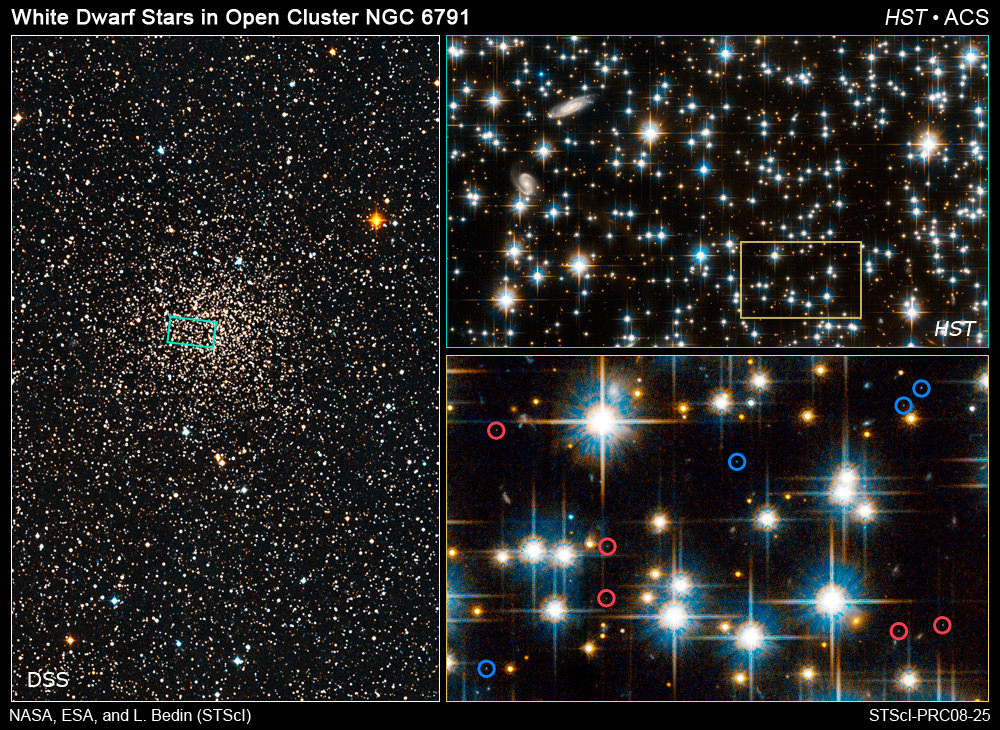
[/caption]
Almost a century ago, astronomers Shapley and Melotte began classifying star clusters. This rough, initial go-around took in the apparent number of stars and the compactness of the field – along with color. By 1927, these “classes” were again divided to include both open and globular clusters. But there are some that simply defy definition.
According to Johns Hopkins astronomer Imants Platais, there is one case which has puzzled astronomers for decades: a well-known, seemingly open star cluster in the constellation of Lyra, named NGC 6791.
“This cluster is about twice the age of the sun and is unusually metal rich (at least twice the Sun’s metallicity),” said Platais, of the Henry A. Rowland Department of Physics and Astronomy’s Center for Astrophysical Sciences. “A couple of decades ago, it was also found that NGC 6791 contains a handful of very hot but somewhat dim stars, called hot subdwarfs. The presence of such stars in an open cluster is rare, though not unique.”
Why are these hot subdwarfs an anomaly? The facts about star clusters as we know them are that globular clusters are notoriously metal poor, while open clusters are metal rich. “The massive stars that create much of the metals live for only a short time, and when they die, they spit out or eject the metals they have created.” says the team. “The expelled metals become part of the raw material out of which the next stars are formed. Thus, there is a relationship between the age of a star and how much metal it contains: old stars have a lower metallicity than do younger ones. Less massive stars live longer than higher mass stars, so low mass stars from early generations still survive today and are studied extensively.”
A team led by Platais and Kyle Cudworth from The University of Chicago’s Yerkes Observatory set out to solve the mystery of NGC 6791 by taking a census of its stars. Their findings revealed several luminous stars in the horizontal branch of the HR diagram… Stars that would normally be found in globular clusters. The hot subdwarfs were confirmed to be genuine cluster members, but they now “appear to be simply the bluest horizontal branch stars”. What’s wrong with this picture? NGC 6791 contains simultaneously both red and very blue horizontal branch stars – making it both old and metal rich. Quite simply put, studying star clusters is key to understanding stellar evolution – unless the cluster starts breaking the rules.
“Star clusters are the building blocks of galaxies and we believe that all stars, including our own sun, are born in clusters. NGC 6791 is a real oddball among about 2,000 known open and globular star clusters in the Milky Way and as such provides a new challenge and a new opportunity, to our understanding of how stars form and evolve,” said Platais, who presented this work last week at the 218th meeting of the American Astronomical Society in Boston.
So… what about star clusters in other galaxies? Three hybrids have been discovered (2005) in the Andromeda Galaxy – M31WFS C1, M31WFS C2, and M31WFS C3. They have the same basic population and metallicity of a globular cluster, but they’re expanded hundreds of light years across and are equally less dense. Are they extended? Or perhaps a dwarf spheroidal galaxy? They don’t exist (as far as we know) in the Milky Way, but there’s always a possibility these hybrid clusters may call other galaxies home.
Until then, we’ll just keep learning.
Original Story Source: John Hopkins University.
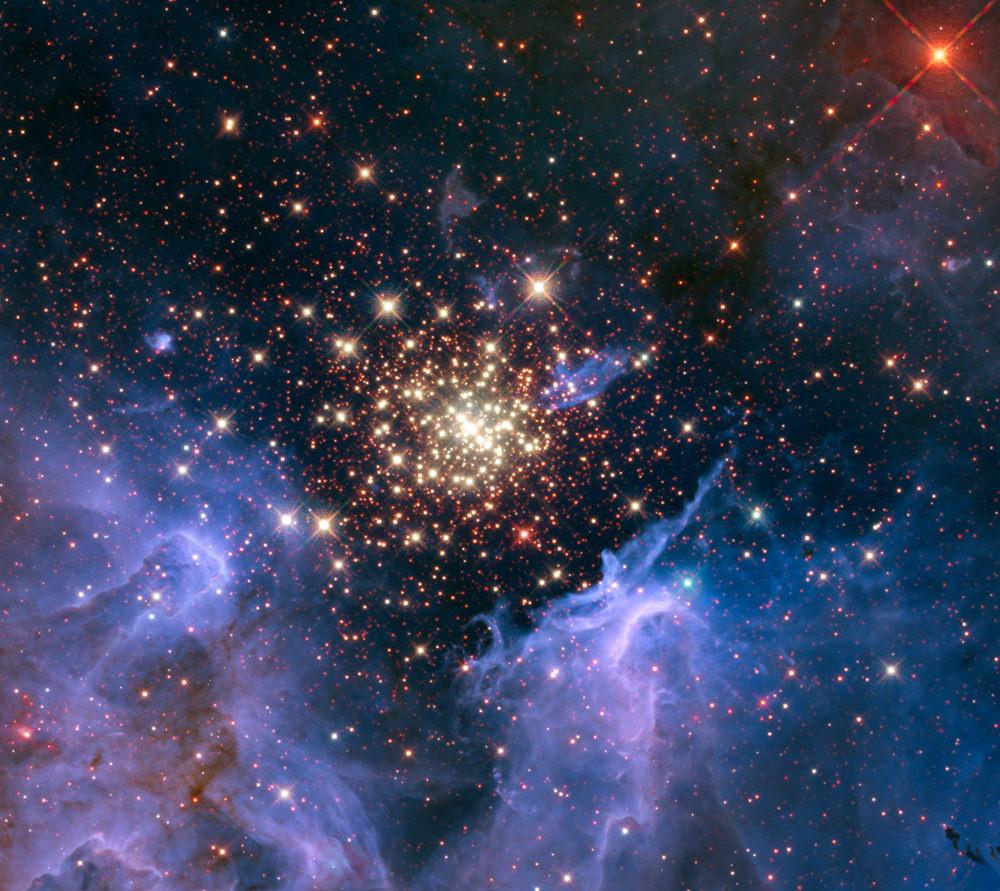
[/caption]
Hovering about the galactic plane and locked in the embrace of a spiral galaxy’s arms, open star clusters usually contain up to a few hundred members and generally span around thirty light years across. Most are young, up to a few tens of millions of years old – with a few rare exceptions as old as a few billion years. We understand that over time the members of a galactic cluster slowly drift apart to form loose associations. But what we don’t understand is exactly how their stars formed.
“The net effect of this is that their stars eventually become redistributed throughout the Galaxy,” said Nathan Leigh, a PhD student at McMaster University and lead author for a study being presented this week at the CASCA 2011 meeting in Ontario, Canada. “This is how we think most of the stars in the Milky Way came to be found in their currently observed locations.”
One of the reasons we’re not able to probe deeply into the construction and evolution of galactic clusters is because they are typically hidden by a dense veil of gas and dust. Beautiful to look at… But nearly impossible to cut through in visible light. This means we can’t directly observe the process of starbirth. To help understand this process, astronomers have combined their observations of star clusters so old they date back to the beginning of the Universe itself . And, thanks to modern computing, they are also able to generate state-of-the-art simulations for stellar evolution.
“Unfortunately, most star clusters take so long to dissolve that we cannot actually see it happening. But we now understand how this process occurs, and we can look for its signatures by examining the current appearances of clusters,” said Nathan Leigh. “We have gone about this by matching up the clusters we make with our simulations to the ones we actually observe. This tells us about the conditions at the time of their formation.”
These simulations have given Leigh and collaborators the stimulus they needed to re-trace the histories of real star clusters, giving us new clues about formation. To complete their studies, they relied upon highly sophisticated observations recently taken with the Hubble Space Telescope.
“Remarkably, we are finding that all star clusters more or less share a common history, extending all the way back to their births,” said Leigh. “This came as a big surprise to us since it suggests that the problem could be much simpler than we originally thought. Our understanding of not only how stars form, but also the history of our Galaxy, just took a much bigger step forward than we were expecting.”
Source: Canadian Astronomical Society.